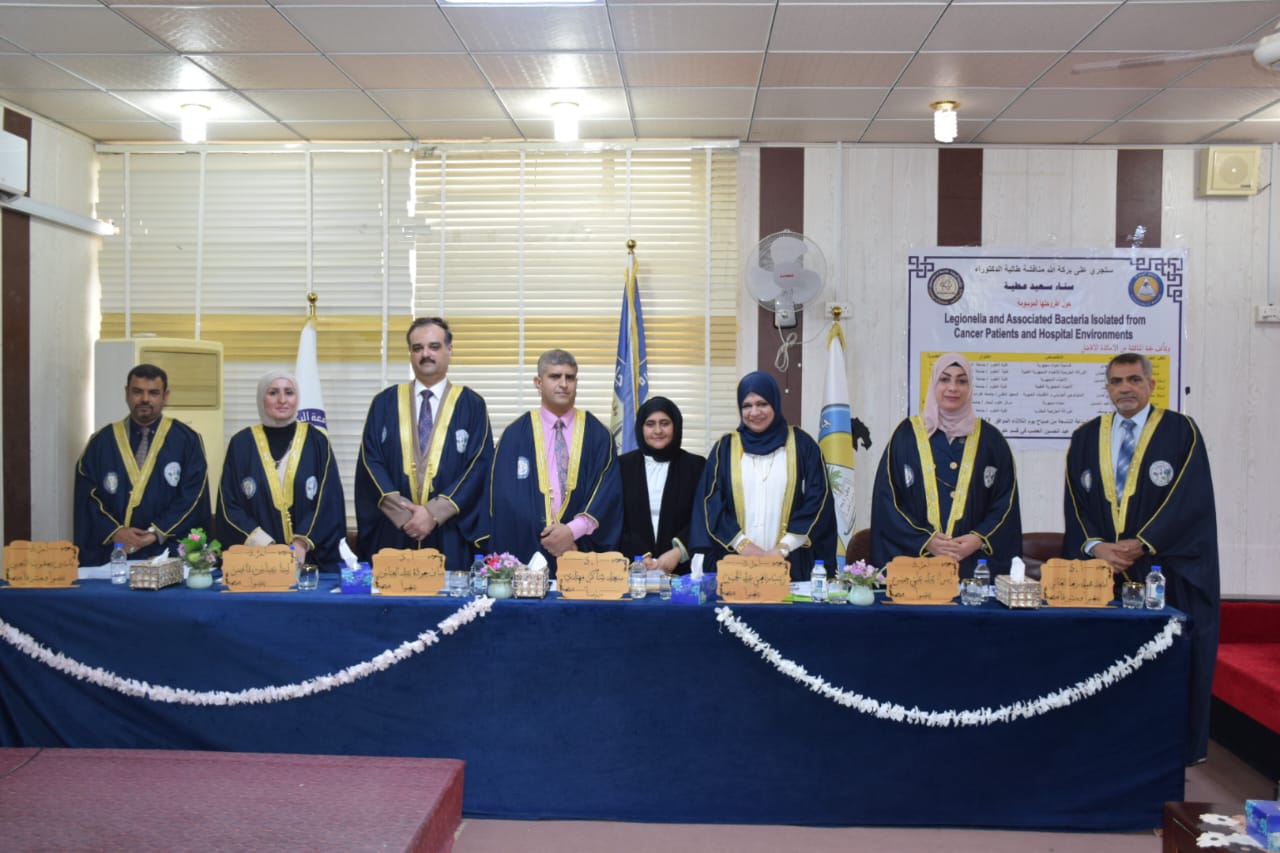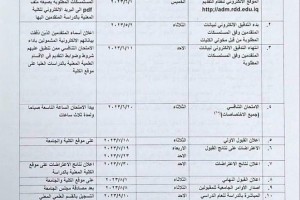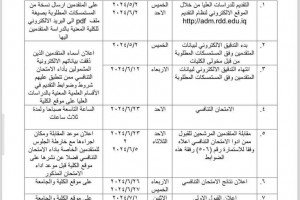
PhD thesis at Basrah University to be discussed Frequency of Legionella and Associated Bacteria with Their Virulence Factors, From Cancer Patients and Hospital Environments.A Ph. D thesis at the faculty of College of Science\Department of Biology at the University of Basrah . (Frequency of Legionella and Associated Bacteria with Their Virulence Factors, From Cancer Patients and Hospital Environments), and showed the researcher's thesis (Sanaa Saied Atia). Thesis aims to Isolation and identification of Legionella bacteria and attached bacteria from cancer patients and hospital environments.The use of different diagnostic methods, which vary between biochemical tests, serological tests, and the use of molecular genetics applications approved for diagnosis . Investigating the appropriate antibiotics is especially important since the limited vision diagnosis leads to prescribing a treatment that does not affect the pathogen and even leads to the accompanying side effects.
and concluded There is a need for quick disease detection, especially as immunocompromised individuals are the most susceptible. Serogroup testing can help with a quick and accurate diagnosis, which is then verified by molecular diagnosis.. The medicine prescribed by hospitals to patients has a limited effect on Legionella pneumophila serogroup 1, while the current study proved that Legionella pneumophila serogroups 2–15 also have pathogenic groups as well as other species belonging to the genus Legionella.. A variety of antibiotics were utilized in the current investigation, which improved the results of drug sensitivity testing.. The study demonstrates that the environment has importancet and significant role in the diversity of germs that are endemic in the human body, as the biofilm, which is a term used scientifically, represents the primary focal points from which these bacteria derive their virulence through the presence of their host, represented by the amoeba.. Legionella spp. prefer a temperature of 37 °C for growth and may typically survive in a range of 27 to 45 °C. This bacteria can grow at salinity temperatures of 2% to 8% and can survive in a variety of pH ranges from 4 to 8, although its ability to do so is accompanied by a growth rate that declines with rising salinity.and recommended Commencing the fight against silt and viscosity buildups in water tanks as well as iron corrosion in faucet filters and air-conditioning equipment It must occasionally be worked on and keep the concentration of chlorine at 0.5 mg / L.Accurate identification of the disease-causing bacteria is essential, especially when the symptoms are similar to those of other respiratory illnesses. Only then can the proper medications be prescribed.Updating a different spectrum of antibiotics from those administered in hospitals in accordance with a recent study that revealed the presence of multiple serogroups of Legionella pneumophila, including serogroup 15-2.It should be remembered that using ineffective medications repeatedly can have side effects that have a detrimental knock-on effect on the bodies of the patients.








